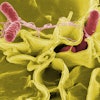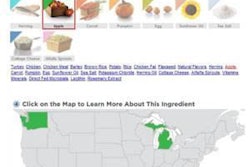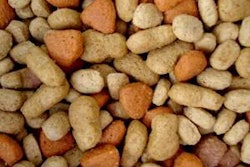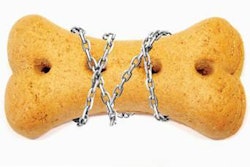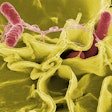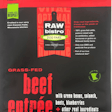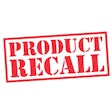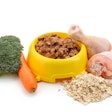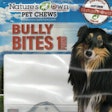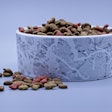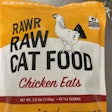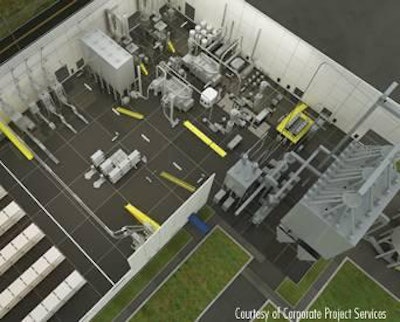
With increased scrutiny by consumers and regulators in the US, European Union and other regions, ensuring the safety of petfood products is crucial. For petfood manufacturers, food safety starts at home—in this case, the manufacturing plant, especially when it is being built or retrofitted.
“Building quality and safety into the finished product should be a primary focus for petfood manufacturers that want to build a new plant or retrofit an existing one,” says Tim Hartter, director of Corporate Project Services. “This means getting things right from the beginning.”
The first focus should be the location of the facility, Hartter adds. “The size of the site should allow for all buildings, parking lots, access roads and future expansion. Adequate drainage of water should also be a priority. Where possible, the facility should be located in an area free of industries that attract vermin. The location should also be free of odors and airborne particulate matter that may be produced by neighboring industries.”
After the proper site has been selected, it is important that planning the layout of the facility includes not only the rooms and equipment but also product flow and people traffic patterns, Hartter says. “Inadequate control of the flow of people through product operational areas is one of the most serious risks for production contamination. People often act as carriers and bring from the outside contaminants such as dirt, debris and vermin, which are ideal vectors for microbiological growth and can directly and indirectly contaminate product.”
To prevent contamination, Hartter recommends establishing zones within the facility, limiting access of personnel from one zone to another. For example, personnel working in the raw material storage, mixing and grinding zone would not access the process zone or the packaging/warehouse zone, and vice versa.
For another holistic view of designing petfood safety into your plant, experts at Horizon Systems suggest considering five interactive food safety themes (Figure 1):
- Process line— can be the kill step of Salmonella and other pathogens but also a source of re-contamination; a place for equipment sanitization, too;
- Facility —establish zones; also consider air cascading and how everything interfaces with the process line;
- Logistics —involves things like lean manufacturing / food safety optimization and post-kill-step material additions;
- Personnel— limit them to their respective zones and ensure they follow proper procedures; and
- Effluents —consider passive vs. active sanitation to suit disposal restrictions.
According to Horizon Systems, a sanitary plant design would look similar to Figure 2, in which the zone matrix is organized around moisture activity (dry vs. wet), material logistics (raw vs. ready to eat), pathogen activity (hot, intermediate or cold) and process control (control points, CCPs and clean-break points).
Experts at Graintec, which specializes in designing plants with a focus on hygiene and food safety, offer these recommendations:
- Again, establish zoning (separation of clean and “dirty” areas);
- Protect against contamination from birds, rodents and other Salmonella-carrying animals in a closed system;
- Protect feed against condensation and moisture, which is especially important after heat treatment (use insulation and heat tracing);
- Avoid cross contamination and do not mix raw materials with finished products (zone separation again);
- Pay attention to service and cleaning-friendly design (space around machines);
- Prevent dust escaping from silos and machines by selecting the right equipment and installing dust spot filters;
- Select technology and equipment that is as self-cleaning as possible (in certain dedicated areas, stainless steel is best); and
- Select building and construction materials and solutions adapted from the food industry (e.g., with round corners wall to floor).
Cross contamination is one of the most common problems in food processing facilities. This can arise from a variety of sources, Graintec says, including residual feed from bucket elevator feet, feed mixers (a ribbon mixer with liquid addition represents the biggest risk) and incomplete emptying of bins and hoppers due to problems like bridging and hang-ups. Other causes of cross contamination, Graintec adds, can be leaking mixer gates, other gates and outlet slides, delayed return of dust to the production line (from central dust aspiration filters, hammer mill filters, etc.) and various dust emissions, including dust adhesions inside conveying equipment, bin and hoppers.
Hartter also suggests looking at poorly designed and operated air handling and dust extraction systems as sources of cross contamination, along with inadequate procedures for personnel and equipment. Establishing positive air pressure zones to assure that contaminates are not introduced into the product should be a major consideration during the design of a food processing facility, he says. “Properly designed air handling systems will control airborne particulates and odors, minimizing the risks to products from airborne contamination by infectious pathogens such as Salmonella and from spoilage micro-organisms such as yeast and molds.”
In considering plant design and safety, Graintec offers additional food for thought:
- It is not possible to avoid contaminated raw materials from entering the raw material zone of the plant, but it is possible to prevent them from spreading;
- Keep the plant clean and dry;
- It is practically impossible to alter badly designed plant layouts, machine supports and process equipment at a later stage; food safety must be addressed in the design phase of any project;
- A hygienic-designed plant will reduce maintenance and cleaning costs; and
- Feed and food safety will continue to get public attention, and most likely new and stricter regulations will be implemented.


